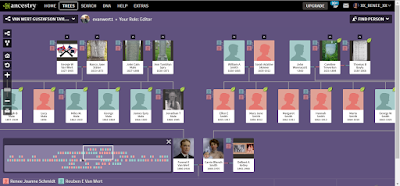There is something truly special about reading the handwriting of your ancestors. 100 years ago they carefully inked a name or a word, and now you are once again reading that same word in the same writing. Even more spectacular is reading postcards from your ancestors. Each one is a memento of a story, a voice from the past. I was lucky enough to receive a box of postcards from my Great Uncle Everette Van Wert a year or so ago. Below is the first installment of some of the specimens from the box collection.
Postcard to Frances from her Father (Date Unknown)
Relations to me:
Frances Gustafson: Great Grandma
Papa/ F. O. W. Gustafson: 2nd great grandpa
The text of the postcard is in half English half Swedish and reads the following:
Dear Frances, How are you?
We will stay in Pueblo till Thursday morning. Brandelle(?) kommer icke hit. Hälsa allesammans. Har din mormor kommit till dig? (illegible sentence)
Pueblo Colo.
August 21st 9:15 am
din papaThe fully translated version looks something like this:
Dear Frances, How are you?
We will stay in Pueblo till Thursday morning. Brandelle(?) will not come here. Greet everyone for me. Has your grandmother come to you? (illegible sentence)
Pueblo Colo.
August 21st 9:15 am
your papa





















